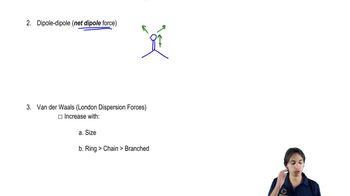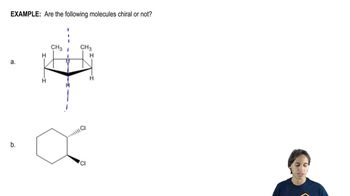Use the symbols δ+ and δ− to show the direction of the polarity of the indicated bond in each of the following compounds:
g. I—Cl
h. H2N—OH
 Verified step by step guidance
Verified step by step guidance Verified video answer for a similar problem:
Verified video answer for a similar problem:



 11:33m
11:33mMaster Differences between ionic, polar and covalent bonds with a bite sized video explanation from Johnny
Start learning